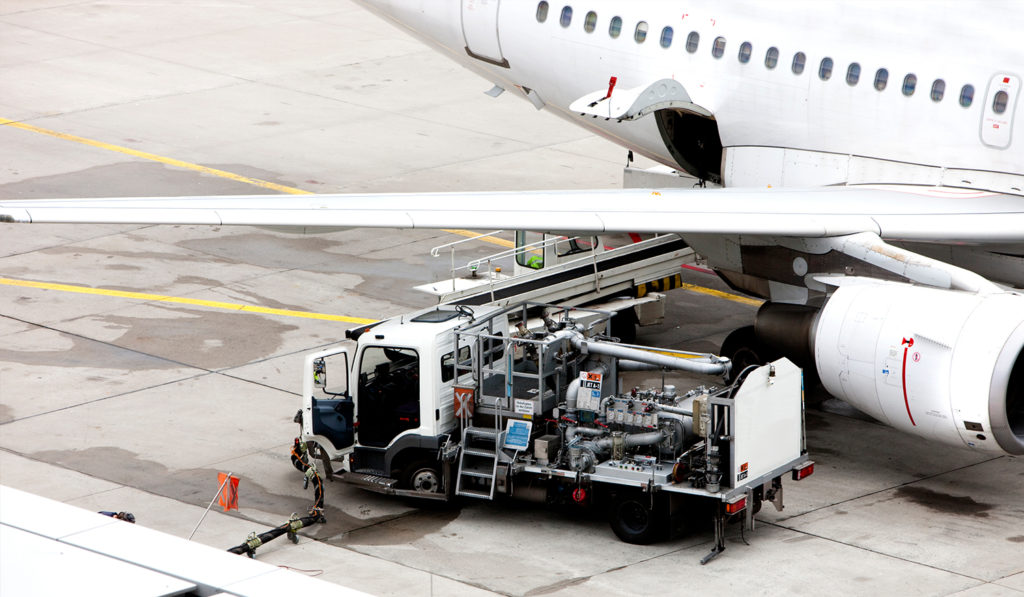Biomass: What can it do for commercial aviation?
AGCO® is a perfect partner to explore options for using biofuels in commercial aviation.

Biomass: What can it do for commercial aviation?
AGCO® is a perfect partner to explore options for using biofuels in commercial aviation.Over the last several months, I have told you about biomass in general. We’ve talked about corn stover; we’ve talked about the work of Pellet Technology USA, and, most recently, I told you about plans the U.S. Navy has for using biomass as a solution for powering its ships and aircraft.
Now, let’s take a look at what biomass can do for commercial aviation — the airlines you and I fly regularly on trips for business and fun.
According to the U.S. Energy Information Administration (EIA), about 28 percent of all energy used in the U.S. goes to transporting people and goods. About 11 percent of U.S. transportation energy sources is attributable to jet fuel.
Petroleum makes up the main source of transportation energy, with biofuels, such as ethanol and biodiesel contributing about 5 percent. In case you are wondering, other alternative fuel contributors are natural gas at about 3 percent and electricity at less than 1 percent of total energy used.
Put simply, biofuels are transportation fuels like ethanol and biodiesel that are made from biomass materials. The EIA explained that these fuels are usually blended with petroleum fuels (gasoline and diesel fuel), but they can also be used on their own.
And, very important, biofuels burn cleaner than pure gasoline and diesel fuel.
The International Air Transport Association (IATA) has said that biofuels derived from sustainable oil crops such as jatropha, camelina and algae or from wood and waste biomass can reduce the overall carbon footprint by around 80 percent over their full lifecycle.
IATA also noted that test flights using biofuels have been carried out by dozens of airlines and have proven that biofuels work and can be mixed with existing jet fuel. Biofuels were first used on commercial flights in 2011. And, very much in line with what I told you about the Navy’s use of biofuels, these flights have demonstrated that alternative fuels are safe and technically sound.
The National Academies of Science (NAS) also has explored possible uses of biofuels or, sustainable alternative jet fuels (SAJF), in aviation. Among other things, NAS confirmed what I just mentioned — that civil and military users of jet fuel have engaged in several technical and commercial demonstrations of the production and use of SAJF and continue to do so worldwide.
According to a September 2016 article in Naval Aviation News, Navy Tests 100-percent Advanced Biofuel, an EA-18G “Green Growler” fighter jet completed a test flight using a 100 percent advanced biofuel at Naval Air Station Patuxent River, Maryland. The article says that the U.S. Navy “is a leader in incorporating alternative fuel into operational supplies, in order to increase mission capability and flexibility.”
But there are challenges. NAS research found that bringing SAJF to market at competitive prices remains an elusive goal for many reasons related to technological maturity, feedstock production and distribution systems, production infrastructure, conflicting market signals, policy issues and depressed oil prices.
And, commercial aviation fuel has to be a liquid. Therefore, if renewable, it has to be made from biomass. Solar and wind power can’t play in this arena like they can with cars or non-commercial aircraft.
In 2016, nearly 720 million travelers flew in and out of airports in the U.S., using slightly more than 17 billion gallons of fuel, according to the Bureau of Transportation Statistics. And, if you are thinking about costs, the Bureau showed that the average cost per gallon of jet fuel in 2016 was $1.45, an increase of $.73 since January 2000. Overall, though, the cost of petroleum has been down in recent years. This has made it difficult for biofuel producers to compete.
But where there is challenge, there is possibility. The U.S. EIA noted that production of biodiesel and other renewable fuels has increased significantly since November 2006, going from just over 520.4 thousand barrels to 3,387.9 thousand barrels in November 2016. Similarly, consumption over the same period has risen from 576.1 thousand barrels to 4,901.8 thousand barrels.
But, as much as there is opportunity, there also is a need for caution.
A summary report from the 2015 Advanced Feedstock Supply System Validation Workshop concludes that although large quantities of agricultural residues are produced within the U.S., only a fraction can be collected without negatively impacting soil resources and the productivity of our agricultural lands. Making sustainable residue removal decisions requires consideration of the full range of factors that can potentially limit the amount of residue that can be removed to replace a barrel of oil or bushel of grain.
AGCO® is a perfect partner to explore options for using biofuels in commercial aviation. Our Biomass Solutions team has more than seven years of experience working with researchers, as well as supporting industry leaders perfecting the biomass feedstock supply chain logistics. In addition, we take great pride in offering insight and innovations that increase productivity and efficiency for our partners.
AGCO believes strongly that there is enormous potential in the bioenergy market. It is this belief that drives us to perfect the biomass feedstock supply chain, and to work toward providing a fuel solution that helps to reduce the carbon footprint impacting our world today.
Written by: Glenn Farris



